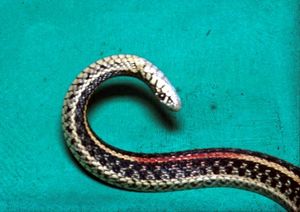Snake Hypothiaminosis
Introduction
Snakes are fed whole prey and therefore dietary problems are relatively uncommon other than in fish eating snakes, such as garter and dice snakes. These snakes, in captivity, have been fed on a variety of frozen white fish. Freezing not only decreases the amount of vitamins readily available, but may also, in certain situations, increase the amount of thiaminase activity.
Examination
Dietary history is an important part of any examination. In many cases it reveals inappropriately food such as feeding improperly thawed prey to anorexic snakes. In this case usual findings are a frozen fish diet. Hypothiaminosis usually leads to neurological signs. Clinical signs on presentation may include incoordination, torticollis, inability to strike or convulsions.
Diagnosis
Diagnosis of hypothiaminosis is based on history, clinical signs and response to treatment.
Therapy
Short term treatment is parenteral thiamine. Dramatic recovery from neurological signs can be seen with thiamine given at 25 mg/kg.
Prevention
Sometimes a more suitable diet can be found. Garter snakes can be encouraged to eat earthworms, pinkies or even cat food (may need to smear with whitebait). Heating fish in boiling water for two minutes (or five minutes at 80ºC) to denature the thiaminase can also be very effective. Finally the addition of thiamine to the fish diet is successful in preventing hypothiaminosis.
| This article is still under construction. |
